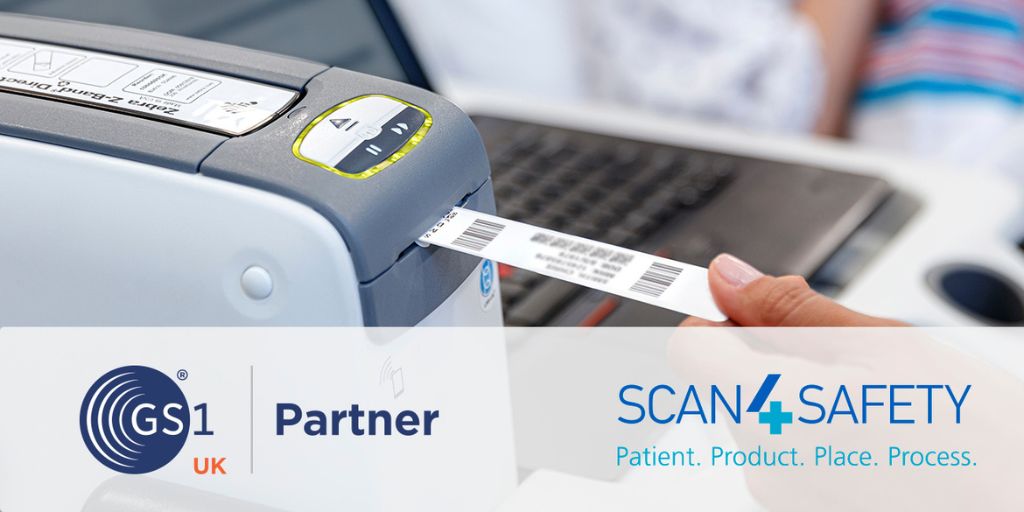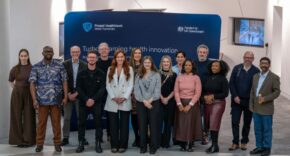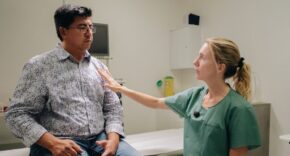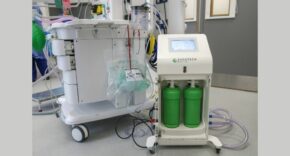
Accurate patient identification is non-negotiable in healthcare but each year there are still countless reports of incidents of patients being misidentified. A recent investigative report from Health Service Journal found that ‘hundreds of patients are being harmed each year because NHS organisations have incorrectly identified who they are.’ Between the years of 2019 and 2023, ‘166 Trusts revealed 58,537 cases of patient misidentification logged in Datix or other patient safety systems.’
The prevalence is still significant, prompting the Healthcare Services Safety Investigations Body (HSSIB) to release a national learning report following widespread inquiries into cases of patient misidentification.
GS1 UK partner, Dakota Integrated Solutions, has more than 20 years of experience of working with healthcare providers. More recently following the introduction of the first National Electronic Wristband Standard in 2012, Dakota’s efforts have centred on supporting Trusts with accurate patient identification.
In a discussion with GS1 UK, Jonathan Daly, Key Account Manager for Healthcare Solutions at Dakota, highlights the importance of accurate patient identification and explores how Scan4Safety helps to minimise misidentification errors.
Why is accurate patient identification so important in healthcare?
Identifying the correct patient at the correct time is one of the most important parts of the care process. Getting this wrong could put someone’s life at risk from the start, such as a patient not receiving necessary surgery or receiving surgery on the wrong site.
Hospitals have implemented various policies to improve patient identification, such as no longer writing the patient’s details on the wristband. This was a measure mandated by the National Patient Safety Agency in 2009 due to the volume of illegible wristbands leading to identification errors. Since then, there has been a shift to printed wristbands but unfortunately incidents still remain.
Now that there are printed wristbands in place, why do you think there are still errors in identifying patients?
There are several factors that contribute to patient misidentification, despite the use of printed wristbands. The primary issue is human error. This can be particularly prominent in high-pressure situations such as when patients are admitted to A&E in a bad state and cannot identify themselves.
Couple this with the growing demand on the NHS and the increased pressures facing the system, there may be occasions where clinicians need to attend to multiple patients at a time which can increase the risk of errors.
Where does the application of Scan4Safety and GS1 standards help reduce the risk of patient misidentification?
The Scan4Safety initiative was catalysed by patient safety incidents, such as the PIP breast implant scandal. Thousands of women were given PIP breast implants which were later found to have been ‘fraudulently manufactured with unapproved silicone gel.’ It is estimated that approximately 47,000 British women had PIP implants fitted, however most are still living with them, unable to be identified. Contrast this with the supermarket horse meat scandal, whereby affected products were identified and recalled within hours.
Scan4Safety uses GS1 standards to uniquely identify every person, product, place and procedure, providing full accountability and traceability of records. When captured in a data carrier, such as a barcode, the unique information can be captured seamlessly, all via a simple barcode scan.
This helps in quickly identifying the correct patient and tracking the products used, which is critical for patient safety. I think it is vital that Scan4Safety is prioritised to really tighten up on patient safety. It provides patients and clinicians with that added extra level of security, not just from an England perspective; this should apply across the whole of the UK.
How does Dakota support providers with implementing Scan4Safety?
When Scan4Safety first started we had the opportunity to work extensively with all six of the demonstrator sites. We worked with them at various levels to implement patient wristband programs and provide fit-for-purpose hardware requirements such as mobile computers and printers.
Now we work collaboratively with an increasing number of Trusts to ensure that necessary information is captured and printed correctly to ensure GS1 compliance. This involves cases such as printing GS1 Global Location Number (GLN) plaques so locations can be accurately identified, as well as printing GS1-compliant patient wristbands that use the GS1 Global Service Relation Number. Our Technical Manager Mike Mannall is a leader in creating Zebra programmes for patient wristbands, formatting them so that they meet regulatory compliance with necessary NHS standards such as DCB1077.
What do you think the barrier is to adoption?
Many Trusts seem to be daunted by the prospect of implementing Scan4Safety. While some Trusts may see the long-term benefits, staff are often faced with other immediate and pressing priorities such as financial pressures, staff shortages and long A&E wait times. These immediate challenges make it difficult for Trusts to focus on long-term projects like Scan4Safety, which may not provide immediate rewards.
In addition, the adoption of Scan4Safety is a significant undertaking. It can sometimes involve changes to inventory management systems, and requires Trusts to label every location with GLNs, educate staff, as well as potentially make changes to host systems. This complexity can be overwhelming for Trusts, especially those with limited resources.
What do you think is needed to amplify adoption?
After the initial enthusiasm and media coverage surrounding the six demonstrator sites, the fervour began to wane when funding was pulled. Many Trusts were eager to get funding and continue the initiative, however the lack of financial support led to a decline in momentum.
Although there is an initial outlay, it is a ‘spend to save’ exercise. The savings are proven and have been evidenced in not just the Scan4Safety report, but also NHS Trust case studies. Our work with the (WYAAT) is a great example of the impact Scan4Safety has had across the WYAAT footprint.
As we have seen more recently, if the emphasis is placed on patient safety rather than cost savings, this should be enough of a cause to amplify adoption. It is about preventing unnecessary harm to patients. According to NHS Resolution, in 2023/24 alone, the NHS had reportedly spent more than £2.8m to resolve clinical claims. If a Trust is able to prevent even one misidentification incident, or stop a ‘never event,’ then the amount of litigation that could be mitigated would quite easily offset the costs.
Where do you feel accurate patient identification can provide extended benefits to the NHS?
Improved patient safety is the ultimate benefit. It ensures that the right patient is identified and that the right product is selected before any intervention occurs. For example, it adds an additional verification to ensure that the right medication is given to the right patient, or that the right patient gets the right blood product, which is vital for their safety and wellbeing.
Accurate patient identification is fundamental for point-of-care scanning as it allows for products to be scanned to the patient. This not only helps monitor stock control for inventory management or usage purposes, but also for patient-level information costings (PLICs) to help reduce unwarranted clinical variation. It can enable effective comparison of what different clinicians use during surgeries which, when standardised, can lead to cost savings.
How do you think needs will evolve with the move towards more integrated care?
London is a prime example of this. Take NHS North West London Integrated Care System (ICS); patients are moved between the ICS’ four hospital sites as needed to optimise the patient care pathway. Accurate patient identification is a crucial part of this as it helps to ensure the right patient records are tracked and shared across the different hospitals.
We have worked with the four hospitals in the North West London ICS as part of its electronic patient record (EPR) system integration of the Cerner EPR. Now each hospital uses the same instance of Cerner to provide consistency. Irrespective of in which hospital a patient is treated, their record can be retrieved wherever needed so clinicians have access to the right information. Bradford Teaching Hospitals NHS Foundation Trust and Airedale NHS Foundation Trust are also exploring this as an ICS approach in order to reduce the risk of misidentification and improve patient safety.
More and more Trusts are starting to work more collaboratively – and this can only be a good thing.
What would be your final takeaway message?
I think everybody agrees that implementing Scan4Safety is the right thing to do, and I think everybody will agree that it is a challenge. But I think it is really important to get everything in order to improve positive patient outcomes.
About Dakota
Dakota delivers fit-for-purpose mobile computing, barcode printing and voice-directed digital solutions into primary and secondary NHS environments. Aimed at reducing clinicians’ administration time whilst providing patients with an enhanced care experience, its expertise spans a range of mission-critical healthcare applications including positive patient identification, asset tracking, wristband printing solutions and labelling.











